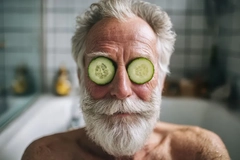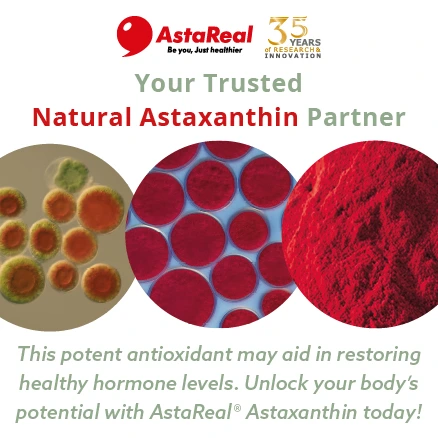Blue biotech straddles ocean conservation and cosmetic innovation
Key takeaways
- Marine ingredients are gaining popularity in beauty as consumers seek natural and sustainable options.
- Algae, marine microorganisms, and other ocean-derived materials are driving innovation across skin, sun, and nail care.
- Brands must responsibly and transparently expand their use of marine resources.
The rising demand for ecological cosmetic ingredients is driving beauty brands to expand their sourcing strategies, and marine ecosystems are being revealed as a reliable supply base. Scientific advancements are accelerating the growth of blue biotechnology, but environmental conservation and responsible sourcing remain essential to ensure marine resources are used sustainably.
Innova Market Insights data indicate a 13% increase in personal care product launches mentioning marine, sea, or ocean claims and ingredients. Over half of these ocean-derived personal care launches were in Europe.
Personal Care Insights speaks with experts at Givaudan Active Beauty about why ocean-derived ingredients are gaining traction and how they’re shaping the beauty industry’s next wave of innovation.
“Consumers show a high interest in marine ingredients, which they often consider to be safe, effective, and trendy. Blue ingredients are frequently associated with health and naturalness,” says Justine Catala, CMI manager at Givaudan Active Beauty.
“The term blue biotechnology, used for marine biotechnologies sourcing specifically marine organisms or marine resources, is linked to the biodiversity associated with various marine ecosystems. Blue biotech focuses on valuing the immense and largely unknown potential of the seas and oceans.”
Blue gains ground
Growing environmental awareness, demand for natural ingredients, and scientific advancements are generating opportunities for marine ecosystems to serve as a solution in the beauty industry. Catala says that these forces are reshaping the way brands approach sourcing and formulation.
“Marine active ingredients are perceived as sustainable and eco-friendly by a significant proportion of consumers. As consumers become more eco-conscious, the demand for sea-derived skin care solutions continues to rise, making marine ingredients a key player in the future of beauty,” she explains.
Catala says that consumers’ longstanding buying behavior reflects their appeal of ocean-derived actives.
“The presence of natural or organic ingredients is still one of the main purchase drivers for consumers,” she says. “Marine-based ingredients align with this demand as they are perceived as more natural and less processed compared to synthetic alternatives.”
Catala points out that these ingredients also deliver measurable skin care results. “Marine organisms, such as algae and seaweeds, possess unique properties, including high antioxidant levels, anti-inflammatory effects, and skin-rejuvenating benefits.”
.webp) Responsible harvesting is essential to protecting marine biodiversity as demand grows.“This also responds to the latest trends of multi-benefit or all-in-one skin care products.”
Responsible harvesting is essential to protecting marine biodiversity as demand grows.“This also responds to the latest trends of multi-benefit or all-in-one skin care products.”
Regenerative sourcing
Maintaining environmentally responsible practices is increasingly essential in sourcing ocean-derived ingredients. “Modern consumers increasingly demand beauty solutions that respect marine ecosystems and contribute to planetary health,” says Catala.
She adds that brands must show concrete progress rather than making marketing claims. “Consumers expect brands not only to claim marine sustainability but to demonstrate it through measurable impact.”
Alice Balloffet Belveyre, global category manager of Biotech Actives at Givaudan Active Beauty, tells us the core sustainability principles in the company’s portfolio revolve around a circular and responsible sourcing program. The program guides the company’s raw material traceability and community impact.
She notes that these principles translate into three priorities at the ocean level: avoidance of overexploitation, reduction of environmental footprint, and preservation of marine biodiversity.
Balloffet Belveyre highlights Givaudan’s Evernityl as an illustration of the three priorities. “Laminaria hyperborea used in the production process of Evernityl has been harvested sustainably by seaweed harvesters in Brittany, France, holding specific licenses issued by the Hauts-de-France Regional Committee for fishery and aquaculture.”
“The regional fisheries committee has established regulations governing the granting of these licenses to ensure the sustainable management of algal resources across the territorial waters and to organize harvesting in a collaborative, fair, and sustainable manner.”
The harvest cycle is intentionally slow to support ecosystem renewal. “The harvesting process is highly regulated, ensuring ecological balance by allowing sites to remain fallow for three to four years post-harvest,” she adds.
Once collected, the algae is converted through a circular production method. “Evernityl is a by-product of a biostimulant used for agriculture,” says Balloffet Belveyre.
.webp) Ocean-derived ingredients are gaining traction as consumers seek natural, sustainable solutions.Catala adds that tapping marine sources aligns with Givaudan’s goal of reducing environmental footprints. “During their growth, macroalgae use the power of sunlight and capture CO2 to produce their key constituents,” she explains. “By doing so, they participate in lowering the atmospheric carbon released by industrial activities.”
Ocean-derived ingredients are gaining traction as consumers seek natural, sustainable solutions.Catala adds that tapping marine sources aligns with Givaudan’s goal of reducing environmental footprints. “During their growth, macroalgae use the power of sunlight and capture CO2 to produce their key constituents,” she explains. “By doing so, they participate in lowering the atmospheric carbon released by industrial activities.”
Ethical considerations
Marine research increasingly focuses on safeguarding ecosystems while supporting local livelihoods. Scientists are investigating how novel ocean-derived materials can provide both environmental and socioeconomic benefits.
A recent study, published in Applied Food Research, on jellyfish collagen, another emerging marine biomaterial, found that “shorter polypeptides and peptides derived from jellyfish collagen exhibit superior solubility in water, excellent hydrophilicity, and enhanced skin penetration when compared to native collagen.”
The researchers argue that jellyfish collagen may represent a sustainable alternative to mammalian sources and even “improve economic opportunities for coastal communities.”
Moreover, the researchers state that collagen extracted from marine species provides a blueprint for developing “ethically sound, ecologically balanced, commercially viable biomaterials.”
Balloffet Belveyre emphasizes that ethical marine sourcing must protect local economies and traditional harvesting knowledge. “Ethical ocean sourcing corresponds to protecting both ecosystems and human communities engaged in raw material collection,” she says.
Supporting harvesters is a key part of this approach. Balloffet Belveyre notes that Givaudan prioritizes “working with local workers to preserve traditional livelihoods.”
.webp) Macroalgae and seaweed provide antioxidant benefits for modern formulations.Diverse formulations
Macroalgae and seaweed provide antioxidant benefits for modern formulations.Diverse formulations
The growing interest in ocean-derived ingredients extends into less conventional branches of marine science as well. For example, research published in ACS Omega demonstrates how molecules produced by bacteria in the gut microbiota of seabream could support skin-brightening and wrinkle reduction.
The study authors note that tyrosinase is essential in two stages of melanin synthesis. “Our findings suggest that these compounds effectively diminish tyrosinase activity, indicating their potential to alleviate hyperpigmentation in human skin.”
The same marine-derived molecules also demonstrated strong inhibitory effects on collagenase.
Blue biotech is also explored for sun protection, barrier support, and nail care. A study published in Cosmetics recently found that red and brown macroalgae contain UV-absorbing compounds. These compounds have photoprotective benefits applicable for natural UV-protecting formulas.
“This work contributes to the expanding field of marine-derived photoprotectants, offering a promising alternative aligned with ‘blue beauty’ and environmentally conscious formulation strategies,” said the authors.
Moreover, nail care manufacturer Fiabila previously launched SPF50+ Base and Top, a hybrid manicure treatment enriched with marine plant extract. The treatment responds to extensive direct UV exposure from outdoor activities and gel-curing lamps, which can result in discoloration, brittleness, and premature aging of the nail bed.
The SPF50+ Base and Top treatment uses marine plant extract for its antioxidants, including vitamins C and E. These antioxidants combat oxidative stress triggered by UV exposure, pollution, and smoking.














